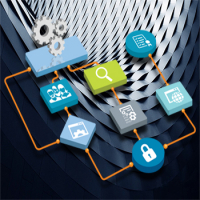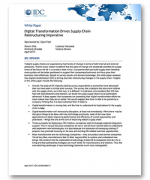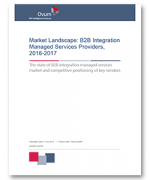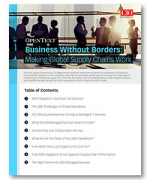The B2B Integration Path: A Roadmap for Business Value Generation
Your business is run on networks of inputs and outputs that extend beyond the four walls of your operations, business leaders already know that collaboration across business partners results in improved management of costs, inventory and ordering processing, ultimately leading to the faster generation of cash.
Data shared in this research reveals a path to the advancement of collaboration via business-to-business (B2B) integration. Key advancement opportunities include:
- A foundational standardisation of tools, with further deployment of advanced technologies and metrics across a collaborative network;
- Centralisation of decision making and the dedication of skilled B2B expertise;
- Increasing the value and volume of digital transactions with trading partners.
The aim of this report is to guide supply chain, operations and customer service executives on the journey to integrating and automating B2B resources, specifically people, technology and processes. In support of this, we introduce the B2B integration path framework. The framework ties together the elements of people, technology and process to create five steps of advancing integration maturity: transactional, informative, analytical, relational and generative.
Using this five-step model as a way to benchmark where companies currently rate themselves on the B2B integration journey, the results of an SCM World survey fielded in early 2016 reveal the following key findings:
- Overall, average maturity is 2.8 on a 5-point scale, with 5 being highly mature and 1 being least mature.
- 14% of companies rate their people, technology and process capability below 2.
- Only 16% achieved an overall score greater than 3.4, of which 2% reached 4 or above.
- When compared to process and technology, the people capability category has the highest percentage of respondents at steps four and five; however, it also has the greatest percentage of laggards still stuck at step one.
- Process has the highest percentage of responses that fail to reach even step three, the analytical phase.
There are clear distinctions in capability across industries. The automotive sector is the leader with an overall score of 3.1, which is propelled by technology and process scores. It’s a clear sign that the complex nature of industrial supply networks and the need for greater multi-tier visibility can serve as a guide for other industries.</li>
- Outsourcing at least part of your B2B integration operations accelerates the expansion of partner networks.
- With each progressive step on the B2B integration path, there is an expected 2-3x improvement in the cash conversion cycle rate.
What’s Related




Favorites





